We may earn money or products from the companies mentioned in this post, but this does NOT cost you anything extra! Check out my full disclosure for more info.
Do you love hiking? – What about being outside, sounds of birds chirping, clear blue skies, or the crisp morning breeze?
Just because it’s getting colder and even snowing in some areas doesn’t mean you have to give up hiking.
Let’s talk about snowshoes!
Purchasing a pair of snowshoes has been something I have been debating for the last few years.
Last week I decided to stop thinking about it and actually look into purchasing a pair!
Let’s find out what pair of snowshoes will be good for you and me. Winter is just around the corner, and having this new section (winter recreation) on the website.
You may as well have some fun with it.
I will start with a question for you: Have You Ever Gone Snowshoeing?

What Is Snowshoeing?
Simply put, it’s able to walk and hike in the snow. But, yes, there is much more to it than just that.
For example, if you have ever walked in the snow, you know it’s difficult.
What if there was a way to float on top of the snow?
Well, maybe that’s a better definition of snowshoeing, being able to walk or hike on top of the snow.
There are many terms you will hear when talking about snowshoes.
Here are five of the most common things I have heard. My idea is also to keep this list quick and simple.
- Binding: This is the material that attaches your shoe to the actual snowshoe. There are different ways to do this, and thanks to current engineering, some really cool and easy-to-use bindings are on the market these days.
- Crampon: These are the claws and teeth-looking things on the bottom of the snowshoe. You will notice these fangs or teeth below your boot and the binding. They allow for extra traction.
- Deck: This is the flat surface of the snowshoe itself. This is the magic behind snowshoes. They allow you to spread your weight over a larger surface on the snow.
- Flotation: The term used means keeping you on top of the snow.
- Traverse: When walking or hiking, you use this to cross a slope. The important thing here is that you will have one shoulder facing the hill while your other faces downhill. This also allows you not to have to walk up to such a steep incline.
As I mentioned, there are many other terms when discussing this field. If you hear another term or word and are unsure what it is, let me know in the comments below.
We are learning together. If there are any good ones, I will update the five listed above to include yours!
Snowshoe Considerations
When looking at the many different snowshoes on the market, I decided to stop and consider one thing.
What type of activity will you be doing?
Other things to consider are the length of the trip you will be on.
Will you be out for short day hikes or multiple day trips?
Next, you want to look at the gear and total weight you will have with you, including the boots or shoes you plan to wear with the snowshoes.
Speaking of the gear you will have with you. And because I LOVE checklists, here are some additional things you should have with you.
After all, you will be in cold conditions and use the list below as a starting point for your needs.
- Snowshoes, boots, or shoes (duh, but I thought I’d put this in any way)
- Waterproof boots or shoes
- Moisture-wicking socks
- Layer your clothing (mountain weather changes quickly)
- Gloves (read more on how to choose)
- Trekking poles with snow baskets
- Food (bars, sandwiches, bring extra)
- Water (use insulated bottles. It doesn’t also hurt to have some hot water)
- Extra phone battery (I use my phone for navigation)
- Headlamp or flashlight
- First aid (make a kit that you will use)
- Sunscreen
- Small towel
- Extra plastic bag (practice leave no trace principles)
As for the clothing you will wear, I suggest avoiding cotton.
They aren’t as warm as wool and other synthetics, and if cotton gets wet, you will be in some trouble.
It doesn’t hurt to have some extra layers with you as well. But definitely leave a change of clothes in your car.
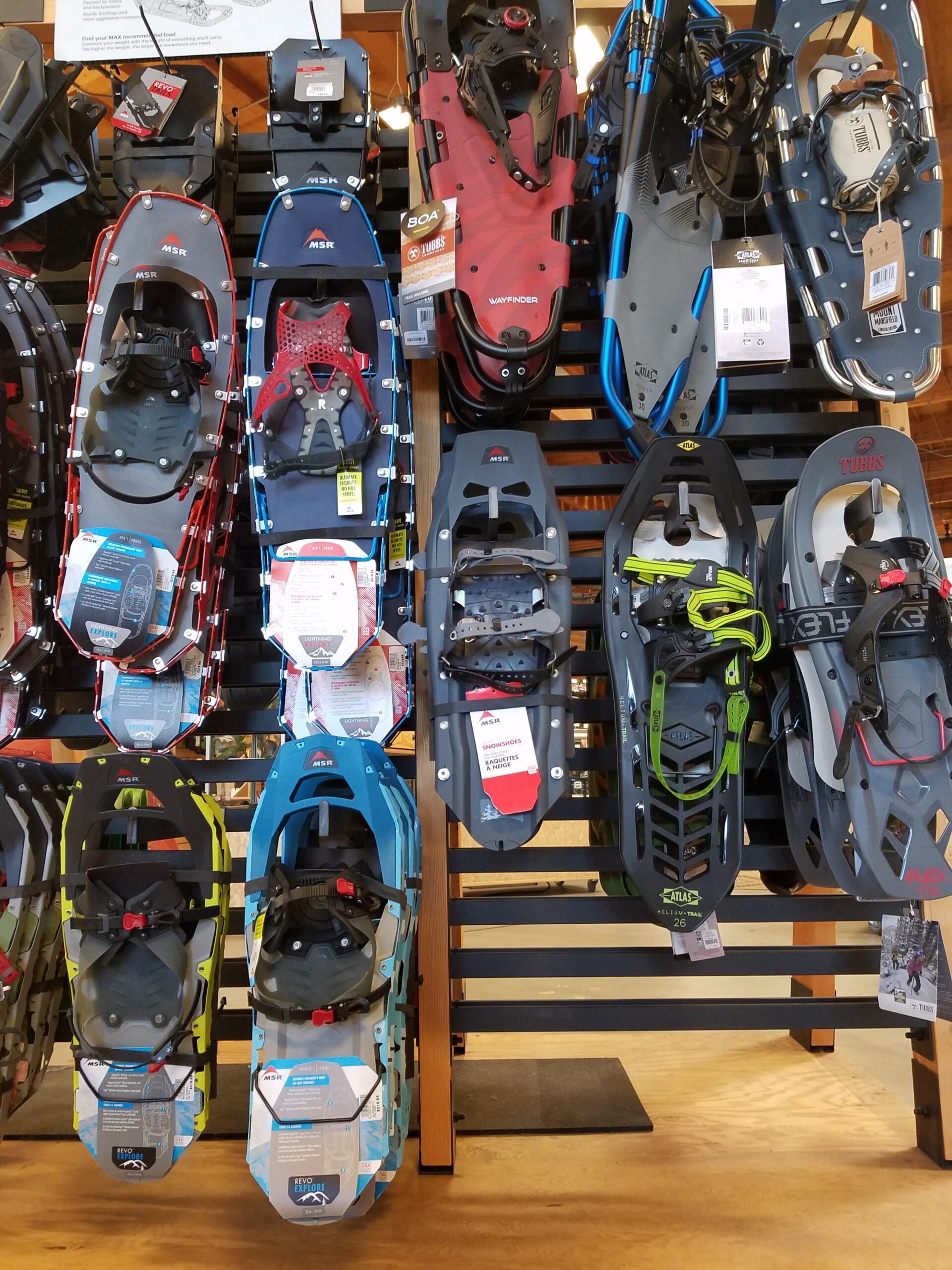 Types Of Snowshoes
Types Of Snowshoes
Now that is all out of the way, let’s cover the types of snowshoes.
If you search online or go into a store, you will notice many manufacturers, such as MSR (the best price I have seen for the 30″ version), Atlis, and Tubbs (this site has a few versions and the best prices I have seen online).
Remember above, I mentioned thinking about the most common hiking you would do. This will help you determine what type of snowshoe is right for you.
For me, it’s mainly mountain terrain. That led me to know I needed something that would help me when walking up and down large hills, dealing with ice and fallen trees.
It might be an area where you are dealing with flat or rolling hills. In this case, you might consider something that allows you to float easier on top of the snow and even the weight of the snowshoe itself.
There is a lot to cover when looking at snowshoe features. I will take three of the most common questions and quickly cover them now.
Snowshoe Materials
As I’m sure you guessed, quite a few different materials are out on the market. Again, you want to focus on the terrain and areas you will spend most of your time.
If you look at the older traditional snowshoe, you will notice they were made of hardwood and rawhide. I remember seeing some older snowshoes that looked like tennis rackets with straps for your shoes.
You will be happy to know that they have come a long way since the early days. And you don’t have to strap rawhide to your feet anymore.
Snowshoe Bindings
Bindings allow your boots to attach to the snowshoe.
It depends on what you are doing. An example is if you are going to be on aggressive terrain, having more foot control is important. On the other side, if you are on flat terrain, comfort might be more of a priority for you.
There are a few different binding options. It depends on the shoe you are getting—everything from straps, buckles to ties. Let me know if you have questions on this, and I can go into specifics.
I always like to mention knowing your gear.
You should know how to use the bindings before going out. This will also help you not get frustrated when putting them on for the first time. Because you have tested and understood how the binding operates, right?
An example is one of MSR’s bindings with a buckle ratchet system. These offer for a quick on and off of the snowshoes to your boots. Another fun feature is you can set and forget the heel strap! Allowing you the ability to put them on and off as needed quickly.
While on the MSR bindings, I started learning about their Paragon binding. From what I have seen, it is their latest strapping system that allows for field repair, is easy to use, and is comfortable, as there are no pressure points that crate hotspots on your foot.
Crampons
This section is getting longer than I anticipated. So let’s cover crampons quickly. Essentially, these are like claws that you attach to your boots when in super icy conditions.
They are an important part of all snowshoes and are easy to notice because you will see them below where your bootstraps into the shoe itself.
Crampons were originally used to fasten to your boots for going up icy mountains. They can be made from steel, stainless steel, and even aluminum.
The crampons provide more safety, like in icy conditions, and the snowshoe helps you float on top of the snow. It’s taking two amazing inventions and putting them together.
The Wilde Escape Pick!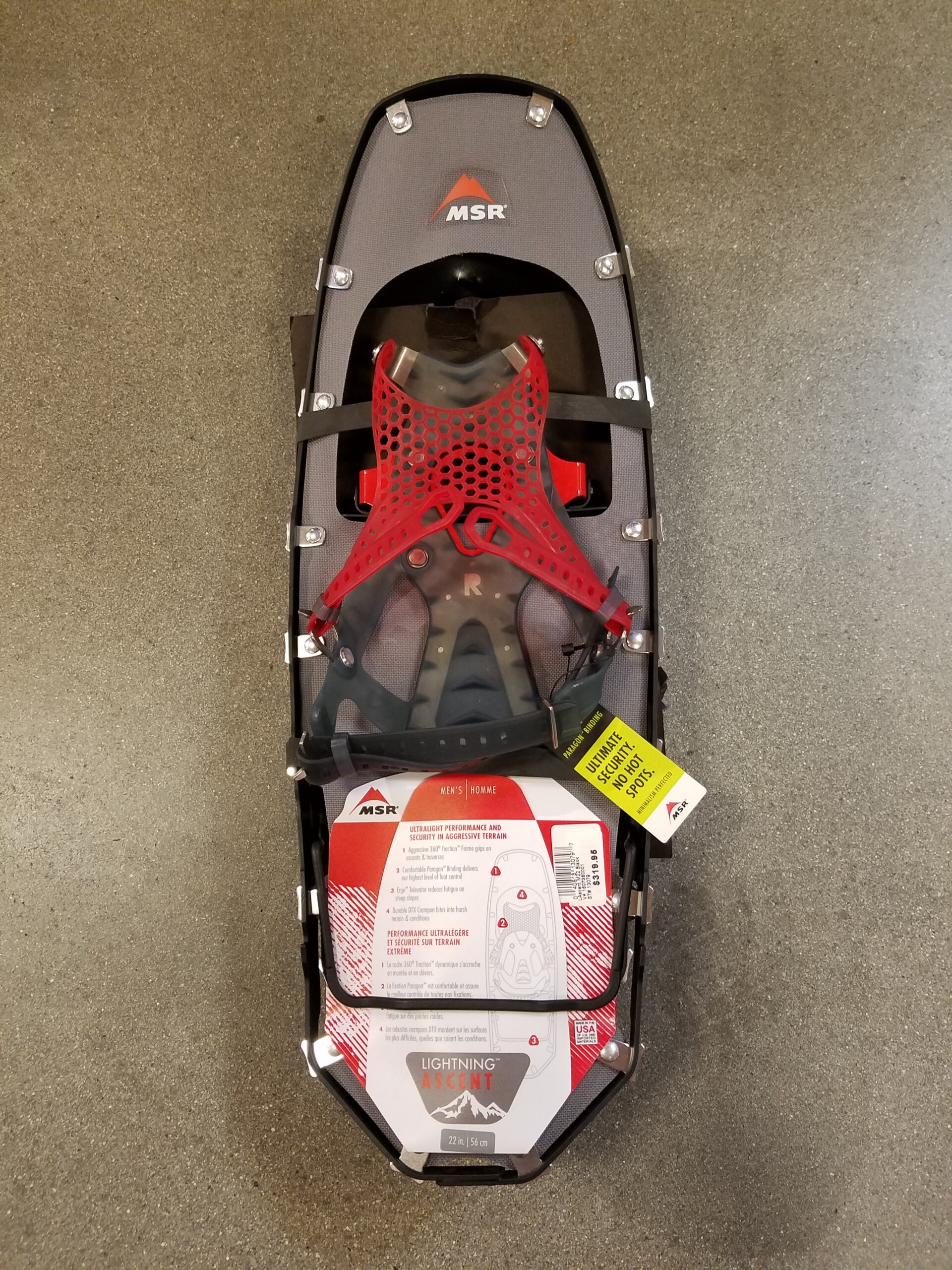
You might be wondering why I’m talking more about MSR snowshoes.
Well, as you might have guessed, I’m leaning towards their shoes as the ones I will purchase.
I like their overall ease of use, and a few years ago, I spoke with one of their super informative reps.
As you may know, I like gear and have a lot of MSR stuff already (as well as their “mother company,” Cascade Designs).
After considering all the above information, I pick the MSR Lightning Ascent.
There is a list of reasons I went with the Lightning Ascents, and here it is:
- They offer different sizes (I like the 25″ ones)
- Lightweight, weighing in at about four pounds
- Steel crampons with all-around protection with toe, heel, and side protection
- Heel lift (helpful for calf fatigue when going up a hill)
- MSR’s Paragon bindings (the freeze-resistant mesh straps accommodate multiple size boots, quickly adjust on the go, and are supposed to be extra comfortable on longer treks)
- Accessories you can purchase (the 5″ tail and field repair kit)
Once you add it all up, including being in various terrains, the MSR Lightning Ascents was a straightforward choice.
I have always said that you should have gear that you will actually use. If the Lightning Ascents don’t tickle your fancy, I found an informative article, REI’s top picks for 2020, that lists many other snowshoes.
Quick Update
To end 2020, I did something EPIC! Which is perfect for my blog.
I went snowshoeing for the first time!
I purchased the MSR Lightning Ascents, which I discussed above, in the 25″ version.
A note on gear. I already had Black Diamond trekking poles with snow baskets. Having these is a must, so I highly suggest you buy some or rent them if you go out.
I also purchased the MSR snowshoe bag to strap the shoes to the bag easily, and I didn’t have to carry them. And, of course, I got the tails (they will be for the next adventure).
See the photo below of when I was preparing them to put on.
If you enjoy hiking, you WILL enjoy snowshoeing. Everything looks different; you get fresh air and amazing views.
So, if you are interested in snowshoeing, you should do it! It was a great experience, and I cannot wait to return.
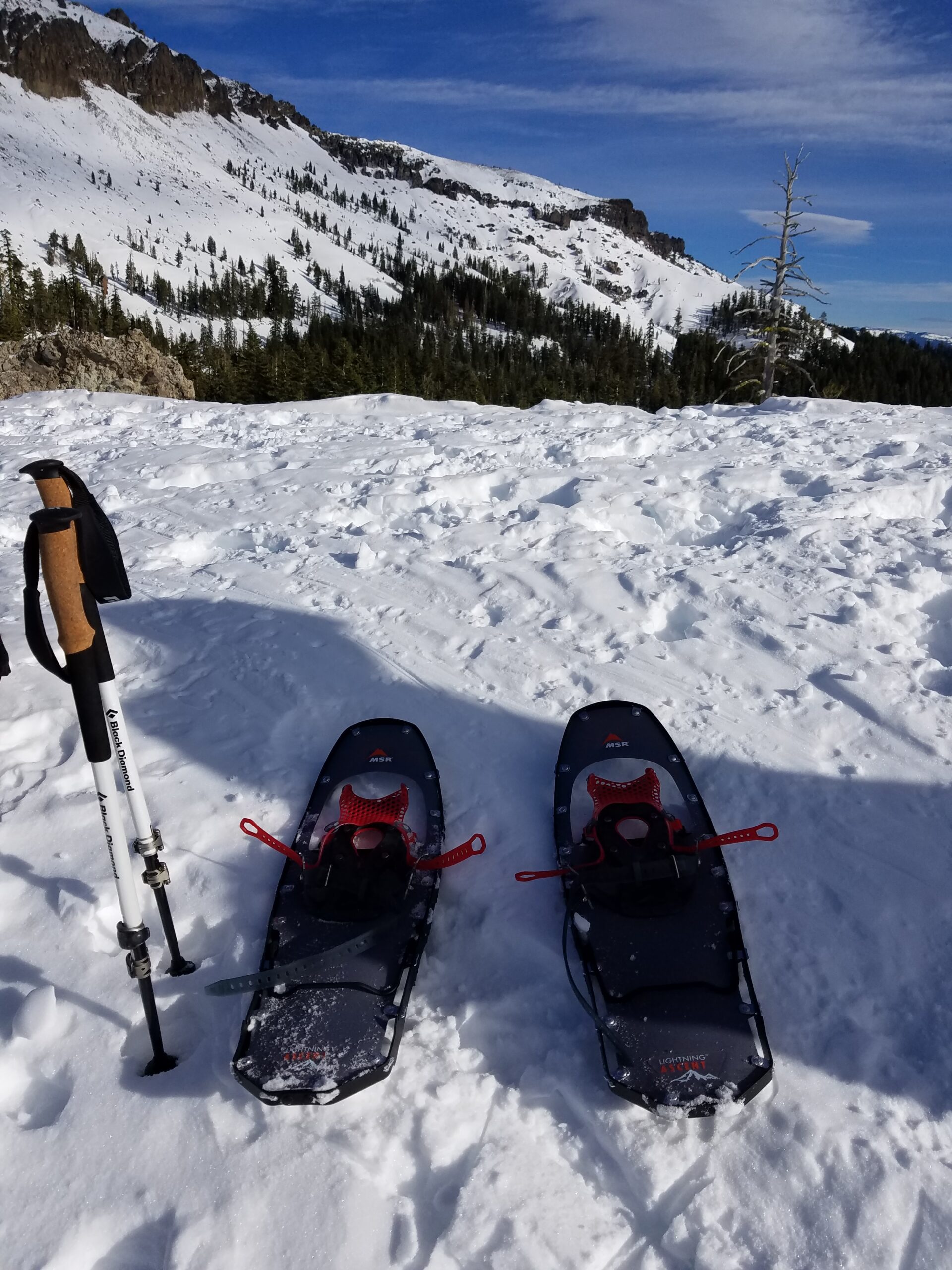
Share With Us
Thanks for joining me on this adventure. I’m sure I can say that we all love hiking and being outdoors. I think we should all try snowshoeing this year, with winter just approaching.
When you do, please take a picture and send it to me. I would love to hear where you went, the snowshoes you used, and how you liked it.
As an added benefit, I’m sure you can see that snowshoeing will be an amazing aerobic workout. It might just be better than hiking in the summer. I say this because you have to lift your legs much higher so your legs will thank you.
Don’t forget my original question, Have You Ever Gone Snowshoeing?
I hope this has helped you with trying to decide what snowshoe to choose. If you already own a pair of snowshoes, which ones do you have? Let me know in the comments below!
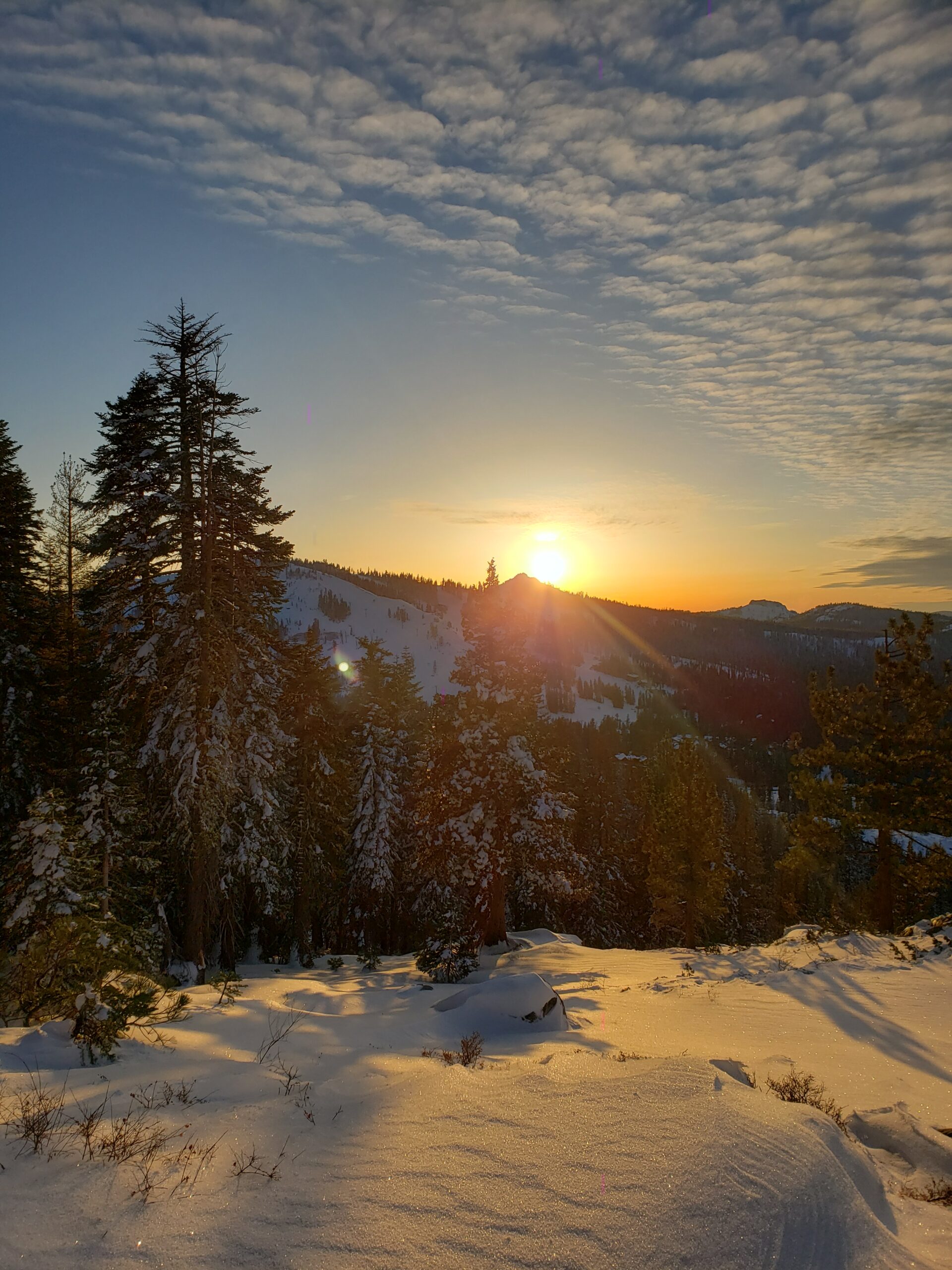
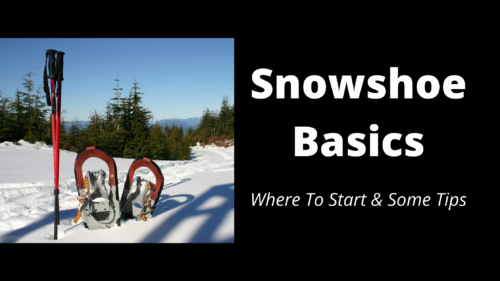
This is a great blog! So much helpful information.
I look forward to you sharing pictures from your snowshoeing adventures this winter.
“Shut up, Legs!”
I will totally share them. I’m trying to get more photos up on Facebook, which Wilde Escape has a page!
Also, I love that you included that quote. Got to love the German cyclist Jens Voigt. It’s almost like you know I say that a lot.
Where I live in Belgium, it doesn’t snow much anymore in the last few years, but I do remember a time where the snow piled up to over 1m high. Walking around in that with just hiking shoes, is no fun indeed.
I have tried snowshoeing once in France though, where the hikers club that I am in, did a long weekend of hiking in the snow with snowshoes on. I would not have made it without shoes like that, that is for sure! Walking in deep snow would otherwise take ages.
Let’s just hope that it will snow some more here again, so I can buy snowshoes, thanks for all the info!
Thanks for reading, and I hope you enjoyed the content. That sounds super fun, going to France with a hiking group!
Maybe that should be on my bucket list!
And here is to the SNOW!!
Thank you for this amazing read. I had no idea of the technical specs and details that need to go into picking the proper type of snowshoes. I never used them before but always wanted to try to walk in them in the deep snow.
I moved away from the cold and snow to the southwest and don’t get any snow where I live. I want to plan a trip somewhere to snowboard and be able to use snowshoes.
Thanks again for this amazing read.
Thanks for the comment, and I hope you can get out this year. I would suggest renting a pair of snowshoes. Mainly because if you don’t go that often, it’s a pretty big expense.
Feel free to stop by and let me know if you do end up making it. I would love to see if you liked snowshoeing.
This is a very instructive and informative article you have here. I did have a great time reading this article and got to learn a lot about Snowshoes. With the knowledge I have acquired from this article, I can be sure of making the right purchase decision when it comes to snowshoes, and also how to effectively make use of snowshoes.
Thanks for the comment and kind words. I hope to continue to help people get up and outside, even when it’s cold. Just don’t forget to dress in layers.